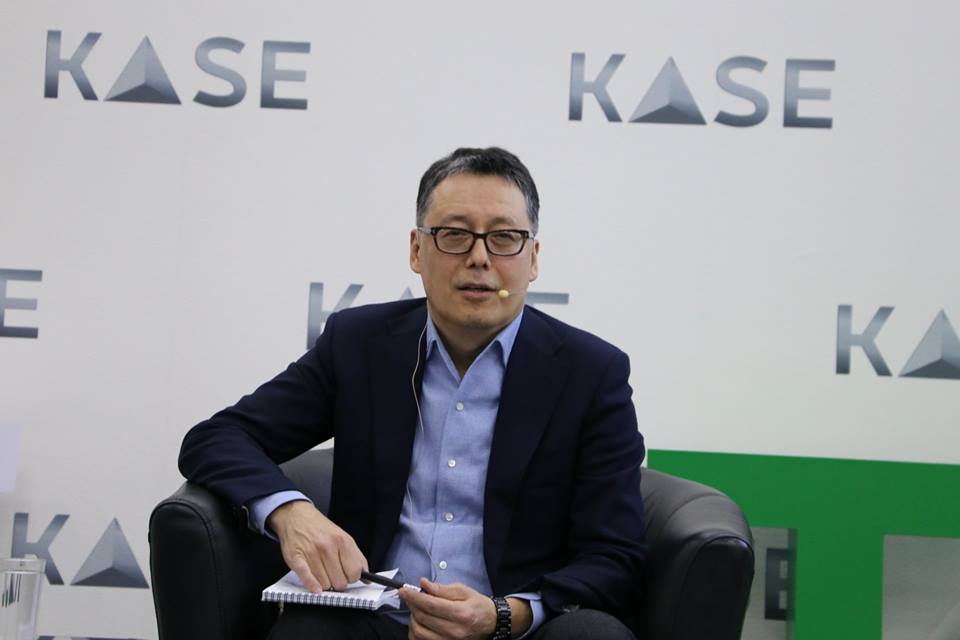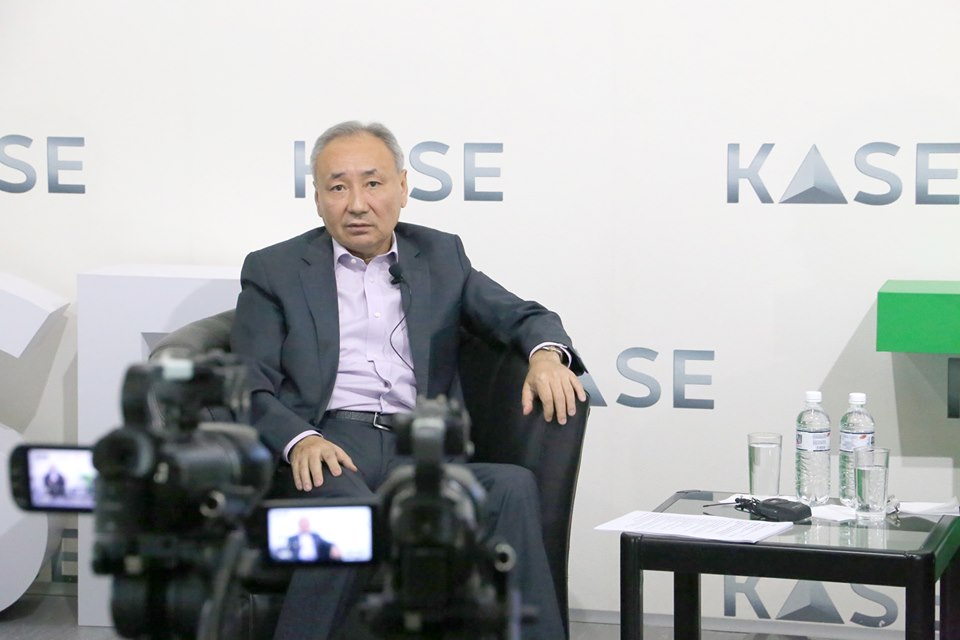 Anvar Saidenov was born in 1960. He has held senior positions in business structures and government agencies since the mid-90s. He worked for the EBRD, London, led Narodny Bank then BTA. He managed the Investment Agency of the Republic of Kazakhstan, was the Vice Minister of Finance of the Republic of Kazakhstan and led the National Bank of Kazakhstan for five years. Since 2012, Saidenov has been working in various commercial organizations as an independent director. It is not appropriate to ask about incomes, but it is clear that such a track record is a guarantee of stable and transparent earnings. Perhaps that is why the financier initiated a conversation about retirement annuities at the Kazakhstan Growth Forum.
Anvar Saidenov was born in 1960. He has held senior positions in business structures and government agencies since the mid-90s. He worked for the EBRD, London, led Narodny Bank then BTA. He managed the Investment Agency of the Republic of Kazakhstan, was the Vice Minister of Finance of the Republic of Kazakhstan and led the National Bank of Kazakhstan for five years. Since 2012, Saidenov has been working in various commercial organizations as an independent director. It is not appropriate to ask about incomes, but it is clear that such a track record is a guarantee of stable and transparent earnings. Perhaps that is why the financier initiated a conversation about retirement annuities at the Kazakhstan Growth Forum.
“The generation that had been making good money most of their lives, immediately believed in pension reform and began to prepare for retirement. They are entitled to purchase annuities for their retirement needs. Life insurance companies have activated for a good reason: sometimes an annuity purchase brings more stability and benefits to adults than a deposit,” said Anvar Saidenov, ex-chairman of the National Bank of Kazakhstan.
According to the Kazakhstan Deposit Insurance Fund, non-term deposits bring their owners 9.8%. However, seven second-tier banks are going through bankruptcy proceedings today. KDIF has already paid 76.2 billion tenge to customers of these structures. In Kazakhstan, life insurance companies were not bankrupt. On the contrary, this market is developing: at present, 8 structures have the status of LICs and the ninth should receive a license from the National Bank in the near future. “The competition in the market is very big, so we should always carefully study the terms of insurers investing large amounts in annuity acquisition,” says Mr. Saidenov.
In accordance with the National Bank, in August 2019 the premiums in the life insurance sector increased by 84.6% to 91.8 billion tenge compared to January-August 2018. The share of collected life insurance premiums in the total insurance premiums amounted to 27% (as of September 1, 2018 - 18.9%).
 “The conditions for the life insurance market development are objective. The first is need of generation. The overall maturation of the economy and financial sector is the second. On the one hand, there are many tools on the retirement annuity market, however, on the other hand, we see constant changes in people’s needs,” said Kadyrzhan Damitov, the member of the board of directors of JSC UAPF, ex-chairman of the National Bank of Kazakhstan.
“The conditions for the life insurance market development are objective. The first is need of generation. The overall maturation of the economy and financial sector is the second. On the one hand, there are many tools on the retirement annuity market, however, on the other hand, we see constant changes in people’s needs,” said Kadyrzhan Damitov, the member of the board of directors of JSC UAPF, ex-chairman of the National Bank of Kazakhstan.
 “We have come to the period when the life insurance in our country is developing rapidly. However, I would not want to repeat the experience of accumulative pension funds, when the entire securities market was fixated on pension funds only. The life insurance companies should not focus only on compulsory types of insurance and pension annuities. Voluntary types of insurance should develop, then the market will not be one-sided, and we will be able to take different classes of investors into account,” advised Yelena Bakhmutova, the Board Chairman of Financial Institutions Association, former chairman of the Financial Inspection Agency of Republic of Kazakhstan.
“We have come to the period when the life insurance in our country is developing rapidly. However, I would not want to repeat the experience of accumulative pension funds, when the entire securities market was fixated on pension funds only. The life insurance companies should not focus only on compulsory types of insurance and pension annuities. Voluntary types of insurance should develop, then the market will not be one-sided, and we will be able to take different classes of investors into account,” advised Yelena Bakhmutova, the Board Chairman of Financial Institutions Association, former chairman of the Financial Inspection Agency of Republic of Kazakhstan.
There is still no clear gradation between affluent, average and starting investors In Kazakhstan. The consumers’ strategies of investments depend on the amount of available funds. Let us take, for example, UAPF statistics: only about 20 thousand women have savings of over 10 million tenge or more. The proportion of the total number of retirement accounts owned by successful ladies is 0.4%. The accumulations of this category of depositors are equal to about 270.5 billion tenge (7% of the total volume of women's accounts). Over 75 thousand men have savings of more than 8 million tenge, their share in the total number of men's deposits is about 1.5%. Moreover, their accumulations exceed 960 billion tenge (or 16% of the total accumulations of men).
“The desires of Kazakhstanis in this matter depend on the size of their savings, the total welfare of each person, how much a person has managed to save for education of his children. These reasons make people choose strategies when buying a pension annuity,”says Kadyrzhan Damitov.
Sociologists have long divided people of different ages into generations: baby boomers (born in 1946-1964), generation X (born in 1965-1981) and millennials (age from 22 to 35 years). Wells Fargo Company has examined the data of the US Bureau of Labor Statistics and found that the largest percentage of people who spend some of their income on retirement savings is among Generation X representatives. The proportion of these respondents is 73%. The representatives of the baby boomer generation are in the second place, 72.6% report that they have been saving money for retirement. But the share of millennials who allocate a part of their earnings to a future pension every month is 61.4%.
Photos: KASE





